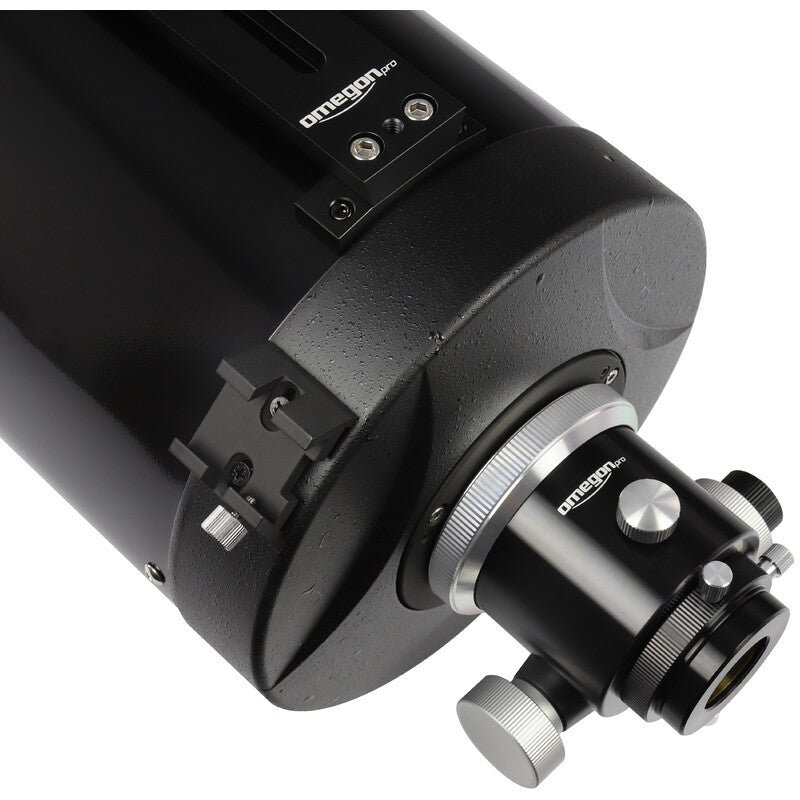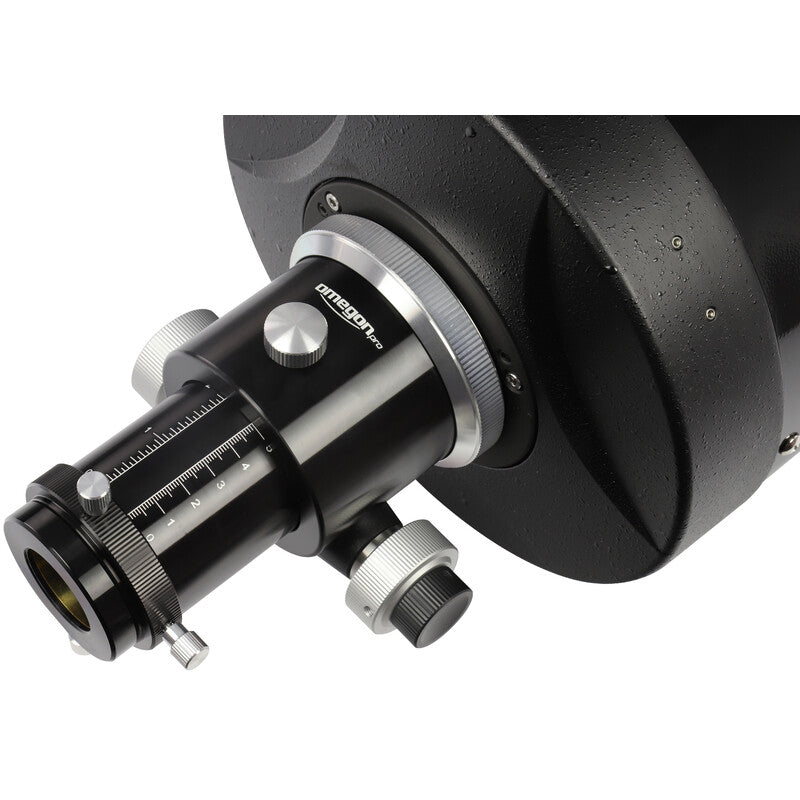Hai bisogno di informazioni sul prodotto?
Description
Wonderful astronomical photos with a professional telescope
This Cassegrain telescope was created to capture more beautiful astronomical photos, with higher contrast and a sharp field of view right to the edges. No surprise, therefore, if professional observation domes almost exclusively use this type of instrument. From today this technology is also accessible to amateur astronomers. How about taking your next astronomical photos to the professional level?
The advantages at a glance:
- Main mirror with 94% reflectivity, for brighter images than a standard telescope
- 8 lens hoods for greater contrast and sharp images
- Quartz mirror: better image reproduction in the cooling phase. Focus remains stable even during the longest photography sessions
- Crayford 2" and 1.25" focuser: no mirror slippage and greater backfocus. For astrophotography simply connect your SLR camera with the included 50 and 25 mm extensions
- Full illumination of APS-C sensors, or sensors up to 30 mm in diameter
Who is this telescope suitable for?
The Cassegrain telescope is a system that delivers better astronomical photos you can be proud of. Many types of instruments are created for the most varied purposes, from photography to visual observation. But the truth is that you can't be an expert in everything. That's why this telescope was created specifically for astrophotographers who prefer compact objects. We don't care about mediocre telescopes that take mediocre photos; we are interested in the masters of astrophotography, who know how to guarantee first-class images of the celestial vault.
Full illumination for most sensors
The Omegon Cassegrain telescope is a master of astronomical photography. Use it with cameras equipped with sensors up to 30mm in diameter and take advantage of full, shadow-free illumination.
Why is a Cassegrain better than a Schmidt-Cassegrain?
The main mirror of the Omegon Cassegrain telescope is parabolic, while the secondary is hyperbolic. Image aberrations are therefore reduced: the field of vision is flatter, coma is less and sharpness is significantly greater. This means astronomical photos with improved image reproduction, even in barely visible details, for a fascinating overall result.
Advantages compared to an SC telescope:
- Sharper image reproduction
- No lens in the optical path, so it does not require infrared filters for planetary photography
- Wider usable field of view for astrophotography with fewer aberrations
- Minor obstructions, and therefore greater contrast
- No chromatic aberration
- No ghost images
Faster acclimatization times
Prepare the telescope and then wait forever? It is not needed. The parabolic quartz main mirror undergoes minimal deformations during acclimatization and is significantly more stable than pyrex. The advantage: the telescope offers you clear images from the first minute of observation.
Quartz main mirror with 94% reflectivity
Enhanced Coating 94%: this is a particular mirror coating, in which every percentage is important when it comes to brighter images with greater contrast. This mirror has excellent performance, because it offers 6% more reflectivity than the standard expected from most telescopes.
Admire bright images and even faint deep-sky objects.
Crayford: Excellent focus
Use your telescope with any accessory you want, without any worries about focusing: with most cameras it will be easy to obtain sharp images. All thanks to the backfocus, which allows you to even use reducers or binocular turrets.
8 lens hoods
The 8 lens hoods guarantee greater contrast and therefore sharper images, in which a greater number of details can be recognized.
No mirror slippage
Photographers don't enjoy playing ping pong, chasing planetary nebulae into the eyepiece. The good news: this danger has been averted. In fact, compared to an SC telescope, this Cassegrain is equipped with a fixed parabolic main mirror. During focusing the object does not jump in the eyepiece, but remains in place.
What objects can be photographed?
The Omegon Cassegrain is the master at photographing compact objects in the Solar System or interstellar space. Thanks to the large focal length it also reaches small nebulae. This is why this telescope is particularly suitable for observing:
- lunar craters
- planets
- distant groups of galaxies - planetary nebulae
- star clusters
Payment and security
Your payment information is processed securely. We do not store credit card details nor have access to your credit card information.











